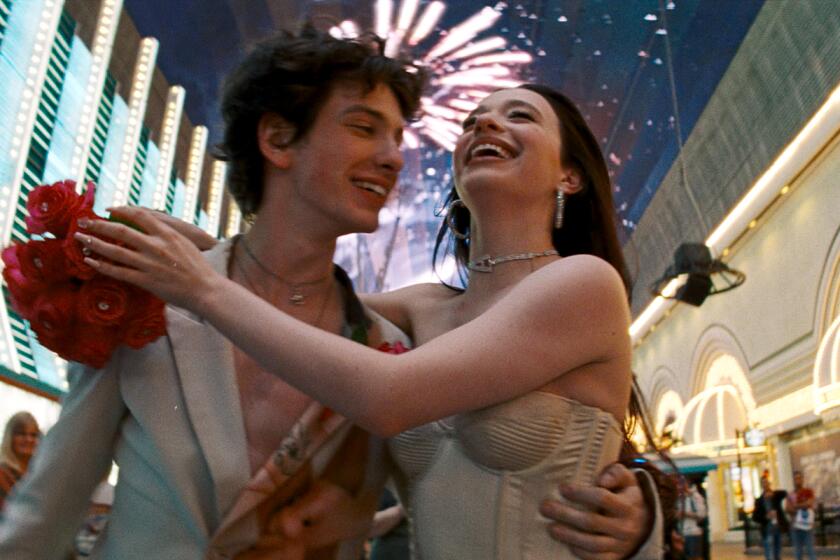Xian Zhang is at home in Bowl
- Share via
YES, we’re into that relaxed stretch of late summer, and yes, most people at Hollywood Bowl concerts don’t attend to be critical as much as to enjoy themselves. Still, guest-conducting the Los Angeles Philharmonic at the Bowl under such conditions -- keeping a large, foreign orchestra in sync, outdoors, while it plays into microphones; staying on top of every note, since your baton is magnified on two giant televisions -- is no small feat.
Which is why it should be noted that Xian Zhang, the gifted young associate conductor of the New York Philharmonic receiving great notices everywhere, made a memorably strong impression Tuesday night. With a graciously direct blend of compact and passionate baton strokes -- to say nothing of her obvious zeal for being a part of the Bowl tradition after years of winning competitions and studying with New York’s Lorin Maazel -- she maintained a magnetic rapport with the Phil’s musicians and led them as if she were both their chief conductor and a beloved collaborator.
The program was a Russian Brahms sandwich: A spunky rendition of the march and scherzo from Prokofiev’s “Love for Three Oranges” gave way to the Brahms Violin Concerto performed knowingly by Philharmonic principal concertmaster Martin Chalifour.
The evening ended with a spirited reading of movements from Prokofiev’s “Romeo and Juliet” -- one that allowed Zhang and her musicians to explore deeply every timbre and dynamic juxtaposition, from eerie string lines to low brass thuds, marked in the score.
Chalifour’s admirable performance was not as spot-on virtuosic as that of a celebrity soloist might have been. Throughout, though, he remained keenly aware of how to perform as a team player, responsibly cueing the musicians and sharing rhythmic landings with Zhang while drawing rich-sounding arpeggios from his instrument.
The result was a moving violin symphony -- not a showpiece -- with a second-movement adagio sung lyrically, with a touch of speed, and a blossoming oboe solo.
In “Romeo and Juliet,” Zhang’s hands erupted for fast repetitive notes and crafted extreme hairpin dynamics, adding great sarcastic attitude to the jazzy main theme. Later she elicited impeccable spiccato string runs. The popular movement Masques, peppered with rumbling bass clarinets, was deliberate and purposefully arrogant, while the mystical, elastic sheen of muted violins laid the groundwork for the work’s Balcony Scene. The piece ended with thick, sticky chords pushing a dark militaristic march to Tybalt’s death.
Zhang had told a strikingly colorful, dramatic and life-loving story -- perhaps not unlike her own.
The biggest entertainment stories
Get our big stories about Hollywood, film, television, music, arts, culture and more right in your inbox as soon as they publish.
You may occasionally receive promotional content from the Los Angeles Times.







